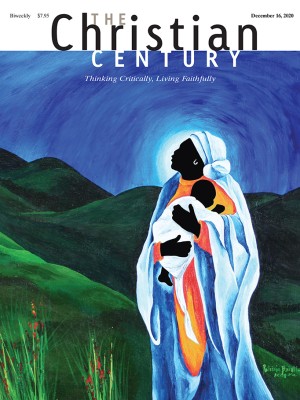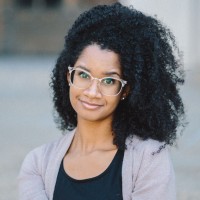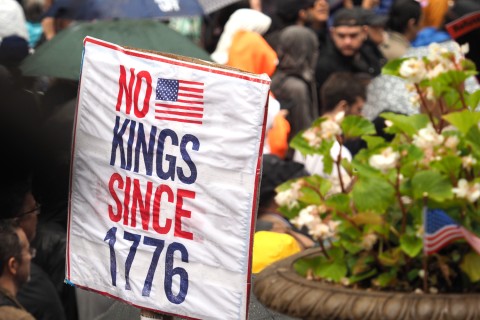The making of the QAnon conspiracy cult

Over the past year, awareness of the far-right collection of baseless conspiracy theories known as QAnon has grown dramatically in the United States. According to new data from the Pew Research Center, in March, only 23 percent of adults in the US had heard anything about QAnon. By September, that number had jumped to 47 percent.
The basic tenets of QAnon are these: a group of military leaders recruited Donald Trump to run for president in 2016 with the specific goal of having him combat a ring of liberal, Satan-worshiping sex traffickers and their stronghold over global media and politics. Adherents analyze Trump’s tweets and public appearances, looking for hidden messages in his clothing, movements, and word choice that affirm QAnon’s predictions and claims.
Read our latest issue or browse back issues.
QAnon’s name comes from an anonymous message board account, allegedly belonging to a high-ranking intelligence officer, with the username Q Clearance Patriot, or Q for short. Since 2017, Q has been posting cryptic clues about this secret liberal cabal. These bread crumbs or “Q drops” regularly include Bible verses or other religious language—which might be one reason QAnon has found such a comfortable home among White evangelicals, who are some of its most conspicuous supporters.
Alex Newhouse, who researches right-wing extremism and religious fundamentalism at Middlebury College’s Center on Terrorism, Extremism, and Counterterrorism, told the Century that the sprawling QAnon narrative is quite compatible with certain sects of evangelicalism, especially those that adhere to Rapture theology.
“In essence, QAnon holds that the world is embroiled in a large-scale, centuries-spanning war between the divinely ordained forces of good and the satanic forces of evil,” which would be familiar to most evangelicals, Newhouse said in an email.
“QAnon can be seen as a more elaborate, more structured version of the 20th-century satanic panics, which also appealed to a cross-section of American evangelicals. Many modern-day QAnon adherents are probably still affected by their experiences during the satanic panics.”
But it’s not just evangelicals who are susceptible to QAnon’s claims. Adherents have a tendency to crop up among other established cultural groups, notably anti-vaxxers and White nationalists. In September, yoga superstar Seane Corn took to Instagram to publicly decry the growing influence of QAnon in what appears to be its latest frontier: yoga and wellness spaces.
“QAnon is popular with people with conspiratorial, populist, and Manichaean worldviews, along with people who have elevated levels of dark personality traits, like narcissism,” Joseph Uscinski, an associate professor of political science at University of Miami who coauthored a 2014 book on why people believe conspiracy theories, told the Century.
He added that, despite growing awareness, he does not believe that QAnon itself is growing. The number of adherents is stable but small. A preelection Yahoo! News poll found that 37 percent of Trump supporters believed at least some of QAnon’s claims. Uscinski thinks it’s about 5 percent of the overall US population.
“QAnon is one of the least believed conspiracy theories I poll on,” he said.
The new Pew data seems to bear this out. Of those adults who had heard of QAnon by September, 74 percent said they believed it was either very bad or somewhat bad for the country.
However, Pew also found that conservatives—the very people most likely to believe in QAnon—are also the least likely to have heard of it, making it all the easier for them to unwittingly repeat its slogans and talking points, subsuming them into more mainstream culture.
For instance, this summer, Facebook and Twitter were flooded with anti-trafficking posts featuring the hashtag #SavetheChildren. Some cities even hosted in-person rallies to protest the sex trafficking of children. Yet many of the people who rallied around the hashtag were unaware that it originated in QAnon circles and is used primarily to promote conspiracy theories about high-profile Democrats running a child sex trafficking ring.
A hashtag is perhaps small potatoes, but for Nancy Rosenblum, professor emerita of politics and government at Harvard University and coauthor of A Lot of People Are Saying: The New Conspiracism and the Assault on Democracy, the unique danger of QAnon is that, unlike other conspiracy theories, it doesn’t stay exclusively online.
“Q is physically out there in the world, at rallies and marches, intimidating disbelievers and partisan opponents and recruiting members,” she told the Century. “Their motto of ‘Where we go one, we go all,’ is a sort of totalistic declaration of militant solidarity.”
While Rosenblum does not believe that QAnon is fundamentally violent, she said that it tends to attract ideologues who are prone to violence. And it doesn’t help that QAnon takes what used to be regular political disagreements and whips them up into part of an apocalyptic narrative.
“Believers anticipate a storm—a cleansing of American politics—through a massive uprising against the polluters,” she said. “Liberals . . . are not just enemies. They are demonized. They must be destroyed, eliminated, imprisoned—not just bested in an election.”
In May 2019, the FBI declared QAnon to be a domestic terror threat, which did little to diminish its support. In November, two women who have publicly expressed support for QAnon were elected to Congress—one of them defeating a five-term Republican incumbent in her primary.
But Trump, QAnon’s savior, did not pull off the landslide victory that had been prophesied for him, leaving the mythic arc at a bit of a standstill. In the week following the presidential election, Q was silent. When he eventually returned, he encouraged followers not to give up hope.
“It had to be this way,” he wrote. “Sometimes you have to walk through the darkness to see the light.”







